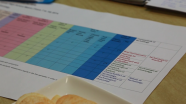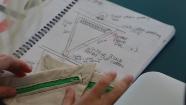Brief development
A brief is a statement that guides students to design and develop a fit for purpose, successful outcome. The brief guides the design thinking processes and is a core element of ‘intervention by design’; the essence of Technology education.
Brief development is an authentic, iterative, and very personal, and ever evolving, dynamic process. Because of this, how students approach it, can look different as they bring their individual personalities and approaches to iteratively refine it, describing and justifying the outcome that is being developed.
Related resources
Indicators of progression
Indicators of progression
The indicators of progression describe the knowledge, skills, and understandings that students should be demonstrating in the Brief development component of the Technology learning area.
Indicators are provided for each level of the curriculum and are accompanied by guidance for teachers.
Videos
Brief development in years 7–10
In these two videos students share their ideas on specifications for two famous outcomes and creating an initial brief for their own practice.
Teaching snapshots
Primary playground redesign – a rich local curriculum opportunity
A years 7–8 project on primary playground redesign was an authentic context to look at brief development.
Local curriculum in technology using a light festival
Students from years 6–9 developed outcomes for an annual community light festival. To create successful outcomes they worked through brief development.
Student showcase
Outstanding scholarship in technology: STEELBRO Bluetooth application
MacKenzie Parker developed a Bluetooth application to retain and share information on container weight for the company STEELBRO. MacKenzie invested time in developing the brief before going ahead with the application.
Technology in the School Journal and Connected
"Wētā", School Journal, Level 2, August 2019
This article provides information on wētā. Use the article for students to participate in brief development for constructing a wētā motel.
Brief development: Key ideas (Word 2007, 132 KB)
Acknowledgment: This paper is derived from an earlier version by Dr Vicki Compton and Cliff Harwood.






